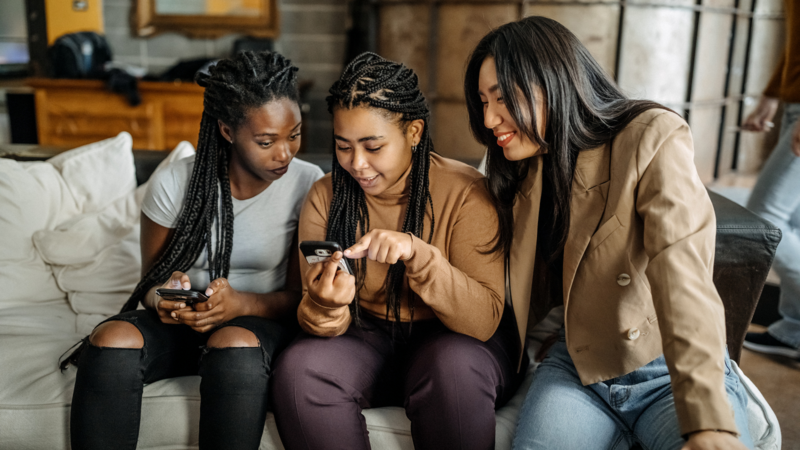It was 10 years ago when National Geographic published its 125th edition, showcasing on the cover what the average American would look like by 2050. Jordan Spencer’s portrait quickly went viral. She became a point of reference for what the future of the country would look like, with her blond hair, green eyes and light-skin complexion. She was 18 at the time and self-identified as biracial, although she checked the “Black” box in the U.S. census, according to the publication.
How National Geographic predicts the average American girl will look in 2050 😍 pic.twitter.com/vLeytguANK
— . (@RyYo21) December 5, 2013
A decade later, her sister Taylor Spencer went viral after a social media user pointed out how her sister looked so much like the model on the National Geographic cover.
“Well, it is her,” Taylor replied before panning the camera toward her sister sitting next to her. The TikTok video has been viewed over 2 million times.
@taylorspencer_ Replying to @TicktokSimpPatrol everyone always thinks her pic is a fake person lol #natgeo
In the comment section, replies abounded and highlighted how they thought the photograph was generated using artificial intelligence.
“I always thought that picture was AI or something never knew it was a real person,” commented someone.
Taylor replied that this is a common thought people have.
“Literally, that’s what everyone thinks,” she wrote.
@mystro170 National Geographic determined what Americans will look like in 2050. More interracial relationships? less religious people? By 2065, no racial or ethnic group will be in the majority, according to Pew Research Center. Pew found that around 46 percent of America will be white, 24 percent will be Hispanic, 14 percent will be Asian, and 13 percent will be Black. Whites will see the biggest demographic decline, coming down from the current figure of 62 percent. Asians will see the biggest rise, going up to 14 percent from the current 6 percent. Do you agree? Let’s talk.. #america #usa #interracialcouple #mixedcouple #fyp #future
Taylor, who is a travel and lifestyle content creator, posted another video giving viewers the back story behind her sister’s National Geographic cover.
“The comments on that video I just posted are so funny because I think everyone in the world thought she was AI. I don’t know why. Her name’s on there. If you Google it, her name comes up with the photo,” she said.
“We’re both from Dallas and for some reason, 10 years ago, Nat Geo was going around Dallas looking for mixed people with blond hair, green eyes, whatever,” she added. “I had a modeling agency at the time and they sent it to me. And I said ‘oh, on my sister, she’s got blond hair, green eyes.’”
Her sister’s portrait, which was taken by renowned photographer Martin Schoeller, ended up being featured as the cover.
“We had no idea it was ever going to be that big,” Taylor said. “Now, she doesn’t have social media, and she’s going to hate me when she sees I posted this.”
Jordan Spencer wasn’t the only model to be featured in the 125th issue of the magazine. Her portrait was included in a series of photographs taken of a diverse set of multiracial people in America. The accompanying feature took a look at how ethnicity, race and experience shape identity. It observed how people of multiracial backgrounds were on the rise as a result of interracial marriage becoming more commonly accepted.
Although the issue of the magazine came out in 2013, recent data comes back from research done at the time. Sometime between 2040 and 2050, there will be more nonwhite children than white children in the U.S., according to research conducted by the Census Bureau in 2018.

